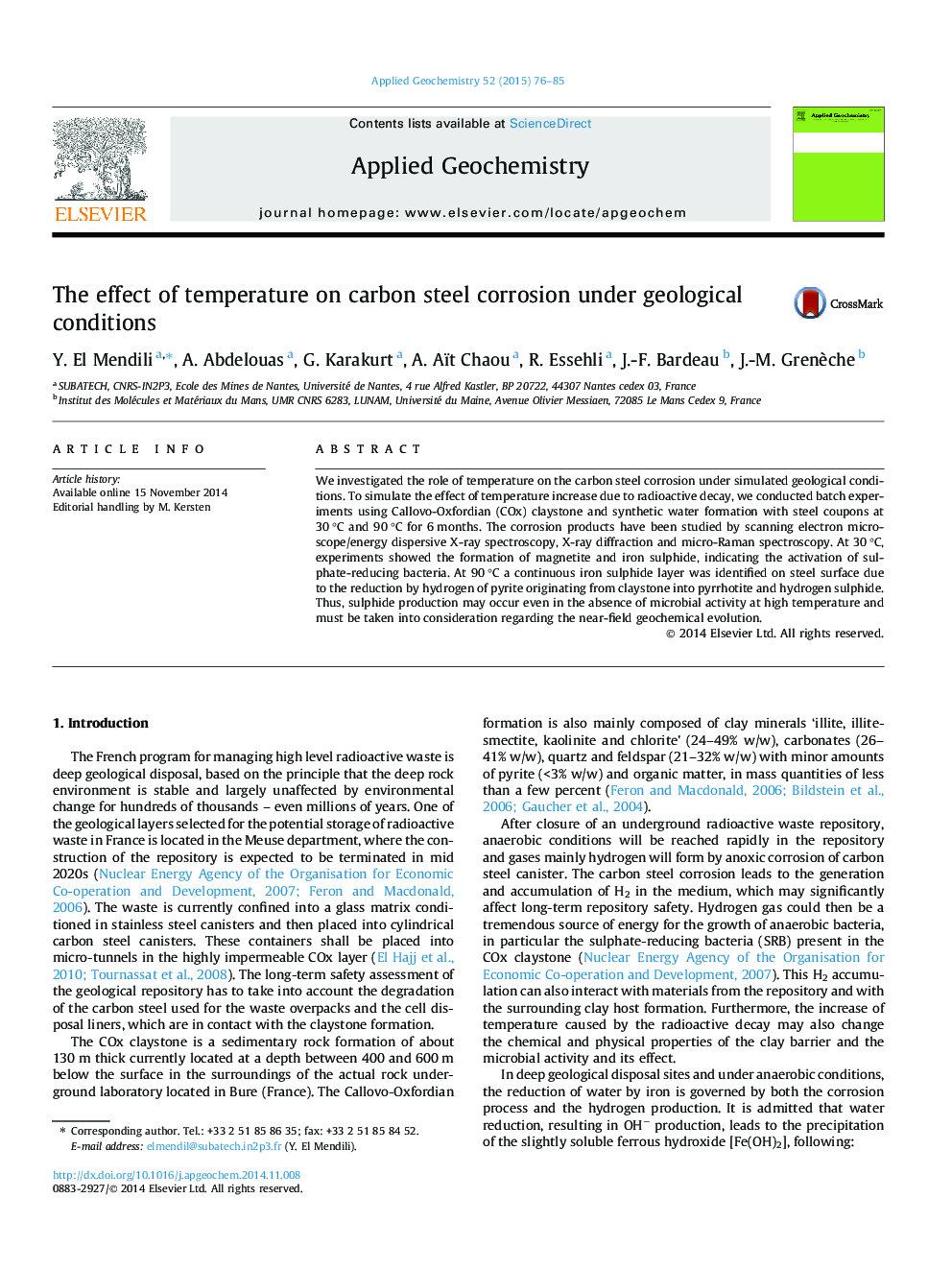| Article ID | Journal | Published Year | Pages | File Type |
|---|---|---|---|---|
| 4435717 | Applied Geochemistry | 2015 | 10 Pages |
•The role of temperature and microbial activity on steel corrosion was investigated.•At 30 °C, steel developed iron sulphide surface due to microbial activity.•At 90 °C, the microbial activity was inhibited.•At 90 °C, H2S was produced via pyrite reduction by H2.•Sulphide production may occur at high temperature.
We investigated the role of temperature on the carbon steel corrosion under simulated geological conditions. To simulate the effect of temperature increase due to radioactive decay, we conducted batch experiments using Callovo-Oxfordian (COx) claystone and synthetic water formation with steel coupons at 30 °C and 90 °C for 6 months. The corrosion products have been studied by scanning electron microscope/energy dispersive X-ray spectroscopy, X-ray diffraction and micro-Raman spectroscopy. At 30 °C, experiments showed the formation of magnetite and iron sulphide, indicating the activation of sulphate-reducing bacteria. At 90 °C a continuous iron sulphide layer was identified on steel surface due to the reduction by hydrogen of pyrite originating from claystone into pyrrhotite and hydrogen sulphide. Thus, sulphide production may occur even in the absence of microbial activity at high temperature and must be taken into consideration regarding the near-field geochemical evolution.
Graphical abstractThe carbon steel corrosion under simulated geological conditions has been investigated and the results show the formation of iron sulphide on steel surface due to microbial corrosion at 30 °C and to the reduction by hydrogen of pyrite originating from claystone into iron monosulphide and hydrogen sulphide at 90 °C.Figure optionsDownload full-size imageDownload as PowerPoint slide
